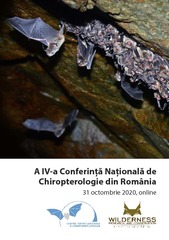Приказ основних података о документу
Bat research and conservation challenges in Serbia
| dc.creator | Bajić, Branka | |
| dc.creator | Budinski, Ivana | |
| dc.creator | Bogosavljević, Jelena | |
| dc.creator | Karapandža, Branko | |
| dc.creator | Paunović, Milan | |
| dc.date.accessioned | 2021-07-20T11:49:54Z | |
| dc.date.available | 2021-07-20T11:49:54Z | |
| dc.date.issued | 2020 | |
| dc.identifier.uri | https://radar.ibiss.bg.ac.rs/handle/123456789/4257 | |
| dc.description.abstract | Bat research in Serbia has been continuous and systematic since 1991. Contrasting historical zoological methods that mostly consisted of collecting samples for Natural History Museum collections (1950-1970'), in the last 30 years bats' well-being became the primary focus and less invasive methods started to be applied. Bat ringing program started in 1993 and provided many valuable data about life expectancies and migration routes over the years, including trans-boundary movements, implying the importance of regional cooperation and conservation efforts. Serbia has 31 bat species, out of which is the least known about tree-dwelling species, that are only seldomly caught in mist-nets and very few roosts are known. Cavernicolous species are much better known for their rossts and numbers, and many caves in Serbia are recognized as crucial for them. Vernjkica cave has the largest hibernation colonies of Miniopterus schreibersii (ca.40.000), Rhinolophus ferrumequinum (1.700), and Myotus capaccinii (4.000); all five horseshoe bat species, including the rarest in Serbia R. mehelyii hibernate in Lazareva pećina and Ranjena Pećina; the highest number of hibernating R. hipposideros (502 in 2020, a new record) was found in Rajkova pećina; and there are many others important underground sites either for the colony size or for variety of occurring species. Petrovaradin fortress in the north of Serbia proved to be a particularly important site, considering the lack of karst or other suitable underground objects in the area. Almost all species are strictly protected by national legislation. Factors endangering bats in Serbia are a direct disturbance in the roosts, or indirect threats such as destruction and fragmentation of hunting grounds, cutting old trees, reduction of insect numbers. Anthropogenic species are under a threat when buildings, where they roost, are renovated, or when intentionally evicted from roof speces or window frames. Even though rarely, some direct killing might happen in rural places where beliefs about dark magic and bats still occur. In the urban environment, the general public's opinion is overall more positive, but unfair blaming of bats for COVID-19 pandemic jeopardized the effect that years of bat-popularization events had on people. | sr |
| dc.language.iso | en | sr |
| dc.publisher | Asociația Centrul pentru Cercetarea și Conservarea Liliecilor | sr |
| dc.rights | openAccess | sr |
| dc.source | A IV-a Conferință Națională deChiropterologie din România, 31 octombrie 2020, online | sr |
| dc.title | Bat research and conservation challenges in Serbia | sr |
| dc.type | conferenceObject | sr |
| dc.rights.license | ARR | sr |
| dcterms.abstract | Богосављевић, Јелена; Пејић, Бранка; Пауновић, Милан; Будински, Ивана; Карапанджа, Бранко; Бат ресеарцх анд цонсерватион цхалленгес ин Сербиа; Бат ресеарцх анд цонсерватион цхалленгес ин Сербиа; | |
| dc.rights.holder | © 2020 Asociația Centrul pentru Cercetarea și Conservarea Liliecilor | sr |
| dc.description.other | IV-a Conferinta Nationala de Chiropterologie din Romania; 2020 Oct 31; Online. 2020. p. 11. | |
| dc.citation.vancouver | Pejić B, Budinski I, Bogosavljević J, Karapandža B, Paunović M. Bat research and conservation challenges in Serbia [abstract]. In: IV-a Conferinta Nationala de Chiropterologie din Romania; 2020 Oct 31; Online. 2020. p. 11. | |
| dc.citation.spage | 11 | |
| dc.type.version | publishedVersion | sr |
| dc.identifier.fulltext | https://radar.ibiss.bg.ac.rs/bitstream/id/8544/bitstream_8544.pdf | |
| dc.citation.rank | M64 | |
| dc.identifier.rcub | https://hdl.handle.net/21.15107/rcub_ibiss_4257 |

